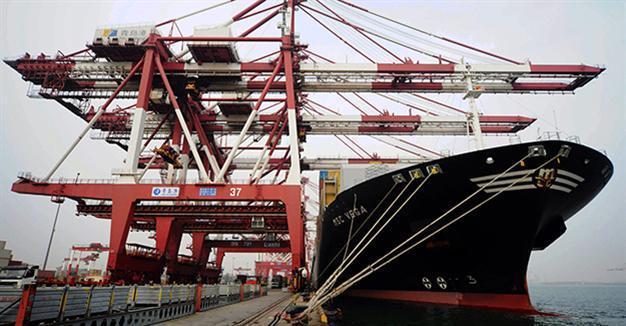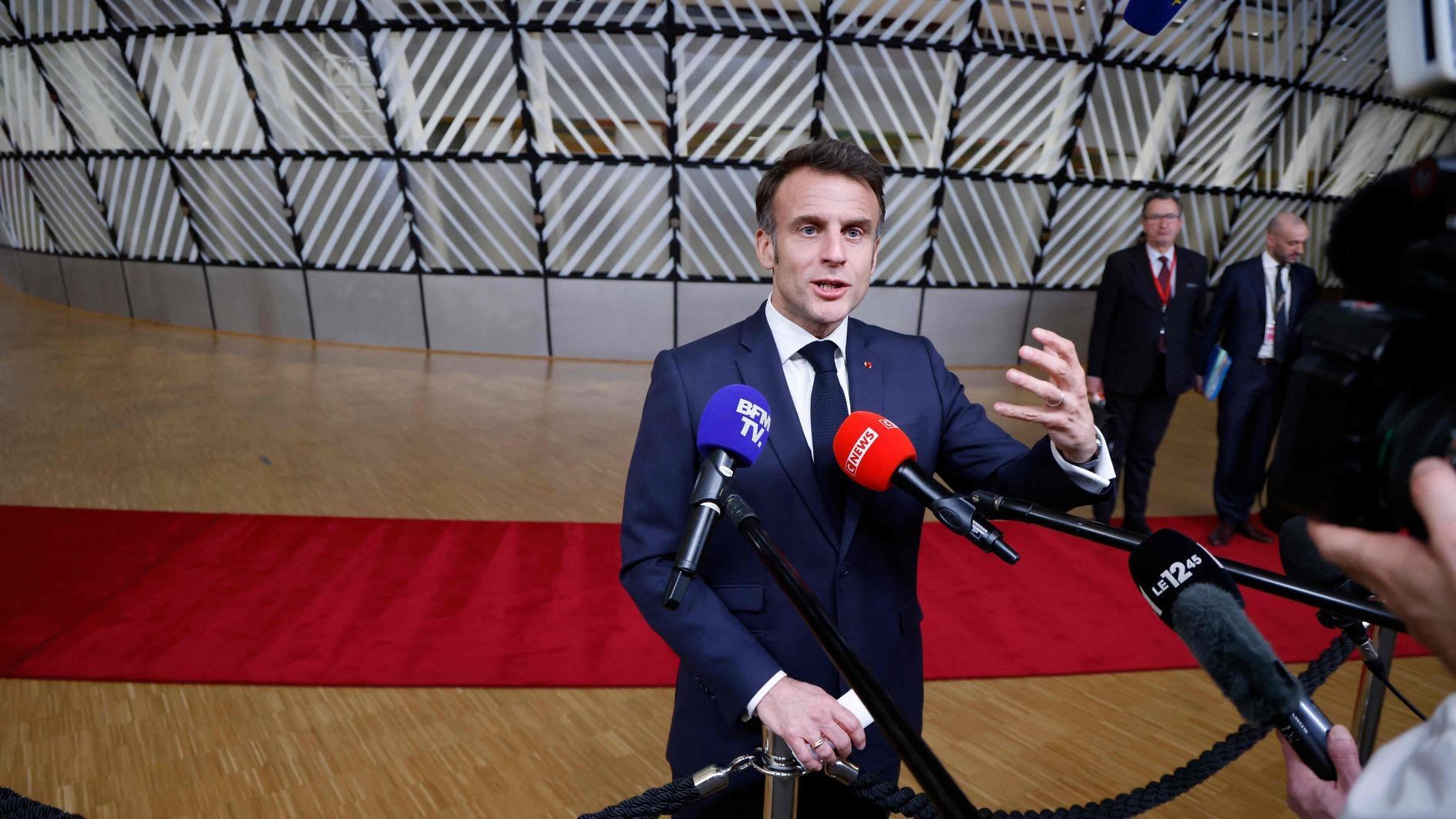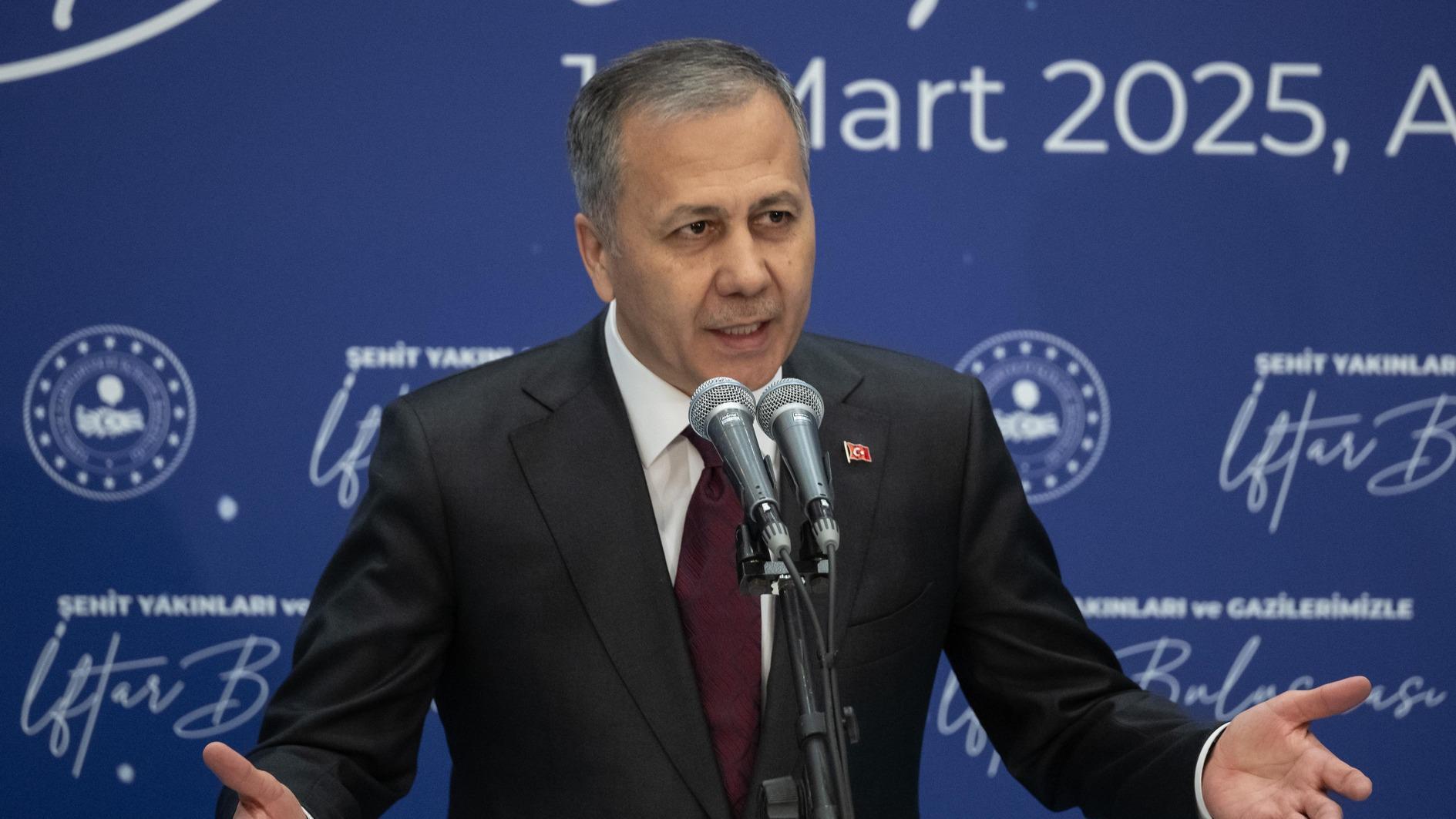China exports post worst fall since May 2009
BEIJING - Reuters

A cargo ship berths at a port in Qingdao, east China's Shandong province on March 8, 2016. AFP Photo
China’s February trade performance was far worse than economists had expected, with exports tumbling the most in over six years, days after top leaders sought to reassure investors that the outlook for the world’s second-largest economy remains solid.Exports fell 25.4 percent from a year earlier, twice as much as markets had feared as demand skidded in all of China’s major markets, while imports slumped 13.8 percent, the 16th straight month of decline.
The export drop was the biggest since May 2009, but economists said it may not necessarily point to a significant worsening in economic conditions due to sharply reduced business activity during the long Lunar New Year holidays, which fell in early February this year.
Still, January-February exports on a combined basis, which should iron out some of the holiday effect, fell 17.8 percent and imports 16.7 percent, pointing to persistently weak demand at home and abroad that is weighing on the economy of the world’s largest trading nation.
“Exports were very strong last year in February because the Lunar New Year started so late and much of the usual disruption from the holiday was pushed into March. So the implication is that we’ll probably see a significant reversal and a stronger number next month,” said Julian Evans-Prichard, China Economist at Capital Economics in Singapore.
“We suspect that overall exports remain weak but we don’t see much evidence of marked deterioration, for instance there was no sudden drop-off in export orders in the Markit PMI (activity survey), and they generally do a pretty good job of adjusting for seasonality.”
Analysts polled by Reuters had expected February exports to fall by 12.5 percent, with imports seen down 10 percent.
China posted a trade surplus of $32.59 billion for the month, down from $63.29 billion in January, the General Administration of Customs said on March 8.
Missing growth targets
After missing trade goals repeatedly in recent years, China’s leaders did not give an estimate for trade growth in 2016 when they set out key economic targets in parliament on March 5, reflecting deep uncertainty about global demand.
Commerce Minister Gao Hucheng said last month that he was confident that China’s trade conditions would stabilize and improve in 2016, though most analysts see no improvement in sight.
“The sharp drop in imports also shatters the hope that China is rolling out a stimulus package that would boost the demand for commodities,” said Zhou Hao, senior emerging markets economist at Commerzbank in Singapore.
“The recent rally in bulk commodities, led by iron ore, might be only short-lived.”
Spot iron ore prices rocketed nearly 20 percent to the highest in more than eight months on March 7, buoyed by expectations that Chinese steel mills are planning an output boost ahead of an expected crackdown on air pollution.
China’s iron ore imports rose 6.4 percent in January-February, though anti-dumping measures are squeezing steelmakers who are trying to keep mills running by increasing sales overseas.
Goldman Sachs, however, said the iron ore rally would not last in the absence of a significant improvement in Chinese domestic steel demand, sticking to its bearish take on one of this year’s biggest commodity comebacks.
China’s leaders set an economic growth target of 6.5 percent to 7 percent for 2016 as they opened the annual session of parliament last week, compared with 6.9 percent last year, the country’s slowest expansion in a quarter of a century.
As part of efforts to stimulate activity, policymakers have proposed raising the 2016 fiscal deficit to 3 percent of gross domestic product, from 2015’s budgeted 2.3 percent.
Economists also expect further reductions this year in interest rates and the amount of money that banks must hold in reserve, extending a year-long stimulus blitz. In late February, the central bank cut bank reserve ratio requirements, releasing an estimated $100 billion in cash for lending.
“Overall, today’s trade data, together with high-frequency data and leading indicators, suggest that growth momentum weakened further in January-February,” economists from Japanese bank Nomura said in a research note.
“We maintain our forecast of real GDP growth slowing to 5.8 percent in 2016 from 6.9 percent in 2015.”
Premier Li Keqiang acknowledged in parliament on March 5 that leaders face “a tough battle” to keep the economy growing by at least 6.5 percent over the next five years, while pushing hard to create more jobs and restructuring state-owned enterprises.
















